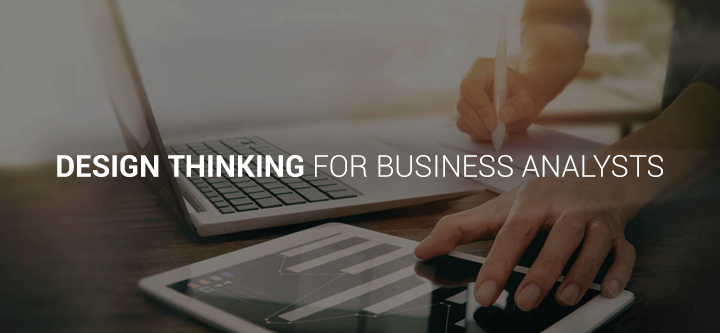IIBA Toronto over the coming year will present and learn on all parts of BABOK v3.0.
We are pleased to present a webinar and later a workshop on prototyping (Ch 10.36) and products that help deliver this technique with JustInMind.com. This event is a webinar that is about the prototyping tool.
We are hosting two webinars, one at this time and a second at a to be determined date and time after working hours.
Following the two webinars there will be a live prototyping workshop scheduled using the JustInMind tool.
BABOK v3.0, 10.36 Prototyping
10.36.1 Purpose
Prototyping is used to elicit and validate stakeholder needs through an iterative process that creates a model or design of requirements. It is also used to optimize user experience, to evaluate design options, and as a basis for development of the final business solution.
10.36.2 Description
Prototyping is a proven method for product design. It works by providing an early model of the final result, known as a prototype. Prototyping is used to identify both missing or improperly specified requirements and unsubstantiated assumptions by demonstrating what the product looks like and how it acts in the early stages of design. Prototypes can be non-working models, working representations, or digital depictions of a solution or a proposed product. They can be used to mock up websites, serve as a partially working construct of the product, or describe processes through a series of diagrams (such as workflow). Business rules and data prototypes can be used to discover desired process flow and business rules. Data prototyping can be used for data cleansing and transformation.
10.36.3 Elements
.1 Prototyping Approach
There are two common approaches to prototyping:
- Throw-away: prototypes are generated with simple tools (such as paper and pencil, a whiteboard, or software) to serve the goal of uncovering and clarifying requirements. The prototype may be updated or evolve during the course of discussion and development, but does not become workable code or get maintained as a deliverable once the final system or process is implemented. This method is helpful for identifying functionality or processes that are not easily elicited by other techniques, have conflicting points of view, or are difficult to understand. These prototypes can be an inexpensive tool to uncover or confirm requirements that go beyond an interface including requirements related to processes, data, and business rules.
- Evolutionary or Functional: prototypes are created to extend initial requirements into a functioning solution as requirements are further defined through stakeholder use. This approach produces a working solution and usually requires a specialized prototyping tool or language. These prototypes may be used in the final solution. If specialized software is used, business processes, rules, and data can be simulated to evaluate the impact of changes and validate desired outcomes.
.2 Prototyping Examples
.3 Prototyping Methods
10.36.4 Usage Considerations
.1 Strengths
- Provides a visual representation for the future state.
- Allows for stakeholders to provide input and feedback early in the design process.
- When using throw-away or paper prototyping methods, users may feel more comfortable being critical of the mock-up because it is not polished and release-ready.
- A narrow yet deep vertical prototype can be used for technical feasibility studies, proof of concept efforts, or to uncover technology and process gaps.
.2 Limitations


Learn how Design Thinking can help manage requirements, cut scope creep and get stakeholders on board with our quick guide to Design Thinking for Business Analysts.
Design Thinking isn’t just for design agencies anymore; recently, large organizations such as IBM, Deloitte and various US Government agencies have turned towards design driven approaches in their software development workflows. But instead of focusing solely on design for decorative purposes, large enterprises are using it to disrupt and improve their core work cultures, from engineering to business analysis. In our most recent guestpost for Business Analyst Learnings, Justinmind looks at everything BAs need to know to start Design Thinking for themselves.
Read the full post on Business Analyst Learnings
What is Design Thinking?
Design Thinking as a concept isn’t new. Born in 1960s Stanford, it started to be applied as a methodology to inspire creative action around 20 years later. Design Thinking has since been adopted in an increasingly wide variety of companies, and not just those focused on strict ‘design’. Large enterprises are now using Design Thinking as a way to apply creativity to increasingly complex business problems.
A Design Thinking approach is based around core principles – user-centricity, ideation and prototyping, and a ‘fail forward’ attitude – a willingness to see ‘mistakes’ as an integral part of the process. The end goal? To make people’s interactions with systems more intuitive and engaging.
Why do Business Analysts need Design Thinking?
Long gone are the days when BAs were tasked with following a set of requirements to the letter and producing a solution from the top-down. Nowadays, business analysis and product design is increasingly bottom-up, requiring BAs to apply creative thinking and flexibility to increasingly complicated business situations. A Design Thinking process allows BAs to solve the wicked business problems they face, always maintaining a user-centric perspective and following an understand-explore-prototype-evaluate workflow.
In a nutshell, Design Thinking is a process that applies the creativity of designers to fit user needs with available technology and business demands – good business analysis applied appropriately and iteratively.
Design Thinking: Tackling scope creep, gathering requirements and validating decisions
Find out how Business Analysts can apply Design Thinking methods to tackle common BA pain points – and see the process broken down in detail – on Business Analyst Learnings now.